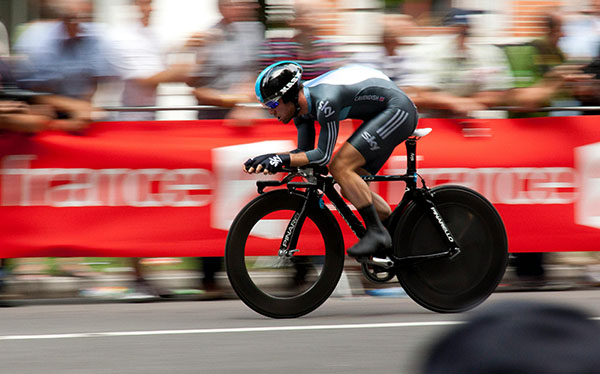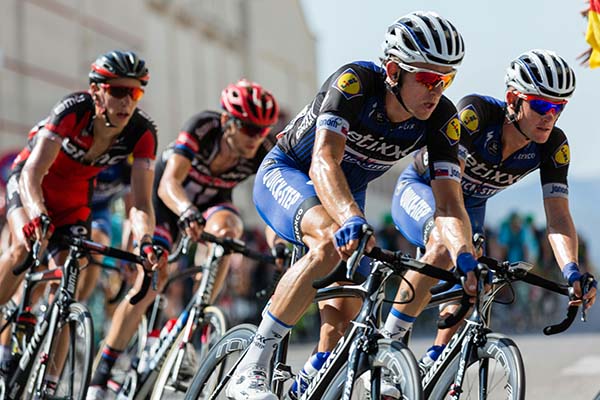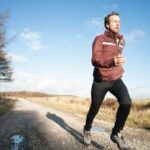Cycling does way more than just push your legs to the limit, it’s a powerful workout that engages nearly your entire body, including one of the most important muscles: the heart. While it’s tempting to think of cycling as all about leg power, a closer look reveals how this sport activates everything from glutes to core muscles, giving a whole-body workout that improves stamina and strength in a unique way. And let’s not forget the cardiovascular endurance boost, which can have an incredible effect on your overall fitness.

Major Muscles Engaged in Cycling
Let’s break down the primary muscle groups that handle the main effort behind each pedal push.
Quadriceps (Quads)
Your quadriceps are the powerhouse muscles in cycling, working hardest as you drive each pedal down. These muscles, located at the front of your thighs, are what give you the power for strong sprints and tough climbs. The more you ride, the more these quads adapt, becoming lean and ready for endurance. I’ve noticed that regular cycling has not only strengthened my quads but also made it easier to tackle inclines without burning out.
Hamstrings
Now, here’s the unsung hero, the hamstrings. Situated at the back of your thighs, the hamstrings kick in during the upstroke of your pedal cycle, helping maintain a smooth, efficient motion. When you think about it, they’re like the team players who balance out the workload, especially in hill climbs or long-distance rides. I’ve found that my pedal stroke feels way more controlled when I actively engage my hamstrings, making the ride less exhausting overall.
Glutes
The glutes, or your butt muscles, add serious push to every stroke, especially during hard climbs. This muscle group stabilizes your pelvis and contributes extra force with every downward push on the pedal. Strong glutes aren’t just a vanity muscle; they’re essential for reducing strain on the lower back and making longer rides comfortable. For me, working on glute strength has made uphill sections less daunting and improved my overall power on the bike.
Secondary Muscles Activated in Cycling
Beyond the main workhorses, cycling activates several secondary muscles that play key supporting roles in balance, endurance, and even comfort.
Calves
The calves might seem like small players, but they’re critical for ankle stability as you ride. They’re constantly engaged, assisting with both balance and power transfer to your feet. Strong calves help you maintain a steady pedal rhythm, which means less fatigue and more efficient movement.
Hip Flexors
These often-overlooked muscles at the front of the hips are hard at work every time you bring your leg up on the pedal stroke. Hip flexors contribute to pedal smoothness and prevent leg fatigue by balancing your push-pull movement. For me, when my hip flexors are loose and strong, my rides feel more effortless, especially on hilly terrain.
Core Muscles
Now, let’s talk about the core, which holds it all together. A solid core doesn’t just keep you balanced; it’s essential for transferring power from your upper body down to your legs, making sure each pedal stroke counts. I personally do two core stability workouts each week, and I can’t stress enough how much this has helped me. With better core strength, I can hold my position for longer, even on bumpy roads or during windy rides. This stability makes those longer rides much more comfortable and enjoyable.

The Heart: Your Endurance Engine
Cycling is also an incredibly effective workout for the heart, a muscle that benefits tremendously from steady, sustained effort. Unlike other forms of cardio, cycling lets you maintain an elevated heart rate over an extended period without causing the same kind of muscle fatigue as, say, running. Regular rides strengthen your heart, improve circulation, and boost your cardiovascular capacity. Since adding more cycling into my weekly routine, my endurance across other activities has also improved, I can run longer, swim with more ease, and recover faster between workouts.
Cardiovascular Conditioning and Fat-Burning
As you pedal, your heart pumps harder, sending oxygen to muscles and increasing your aerobic capacity. This kind of steady-state cardio also helps your body become a more efficient fat-burner. Even at a moderate pace, you’re training your aerobic system, which has long-lasting benefits for heart health and fat metabolism. Plus, for those who like long-distance rides, this cardiovascular training means you can handle hours on the bike without tiring as quickly.
The Importance of Balance for Injury Prevention
Having balanced muscles is key in cycling, not only for power but also for avoiding overuse injuries. If your quads are super strong but your hamstrings or glutes aren’t keeping up, it could lead to strain or even knee issues. Personally, I used to get knee pain after long rides, but once I began focusing on strengthening my hamstrings and glutes, the discomfort went away. Now, I feel balanced on the bike and experience fewer aches after my rides.

The Impact of Balanced Muscles on Pedal Smoothness
When your muscles are balanced, your pedal stroke becomes smoother and more efficient. You’re not just relying on one group to push the pedal; instead, your entire leg is involved, creating a more circular motion. This can reduce fatigue over long distances and help you conserve energy. Focusing on hamstring exercises has really improved my pedal stroke, making each ride feel like less of a grind.
Functional Training Tips for Cyclists
Functional strength training can be a game-changer for cycling, and I’ve found it really improves my overall performance. Here are some exercises that target key cycling muscles and build stability:
- Single-Leg Deadlifts: Target the hamstrings and help with balance, making them ideal for a smooth pedal stroke.
- Glute Bridges: Build strong glutes, adding more power and preventing back pain.
- Russian Twists: Strengthen the core for better control and less strain on long rides.
- Calf Raises: Engage your calves for improved ankle stability and prevent fatigue on extended rides.
Wrapping It Up: Muscles, Heart, and Stamina
Cycling is an incredible workout for nearly every part of your body. From the quads and glutes to the stabilizing muscles like the calves and core, each part works together to give you both strength and endurance. And don’t forget the heart, a stronger cardiovascular system means more stamina, better recovery, and improved performance, not just on the bike but in any endurance sport.
Cycling isn’t just about the legs; it’s about working every muscle in sync, building endurance, and creating an efficient, balanced body ready to tackle any ride. The next time you hop on your bike, think about all these muscles working together to push you forward, mile after mile. Happy riding, and here’s to making every pedal stroke count!





